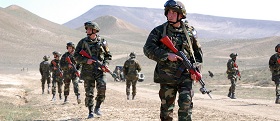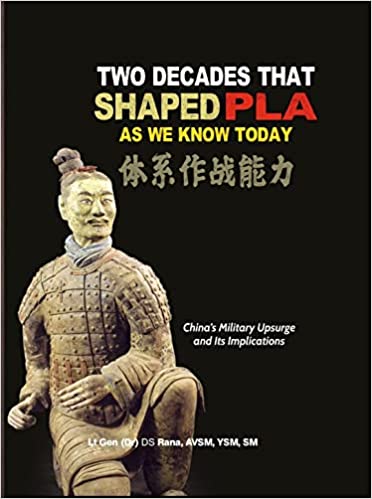The Four-Day War: the Status Quo Has Become Dangerously Explosive
Karabakh forces’ artillery is seen near Nagorno-
Karabakh's town of Martuni, April 8, 2016
In
Login if you are already registered
(no votes) |
(0 votes) |
Doctor of Political Sciences, Deputy Director of the Caucasus Institute
On the night of April 1–2, 2016 Azerbaijan launched the most massive military attack since the signing of the tripartite ceasefire agreement in May 1994 by the parties involved in the Nagorno-Karabakh conflict. It is hard to say now what exactly prompted the military-political leadership of Azerbaijan to escalate the conflict. Most likely, it was brought about by a combination of a number of factors and causes, varying from financial and economic problems facing the country (a dramatic drop in oil prices has aggravated the domestic economic and socio-political situation in Azerbaijan) to the controversial regional context.
On the night of April 1–2, 2016 Azerbaijan launched the most massive military attack since the signing of the tripartite ceasefire agreement in May 1994 by the parties involved in the Nagorno-Karabakh conflict [1]. It is hard to say now what exactly prompted the military-political leadership of Azerbaijan to escalate the conflict. Most likely, it was brought about by a combination of a number of factors and causes, varying from financial and economic problems facing the country (a dramatic drop in oil prices has aggravated the domestic economic and socio-political situation in Azerbaijan) to the controversial regional context. By the beginning of 2016, the official foreign exchange reserves of the Central Bank of Azerbaijan dropped to $5 billion (whereas a year earlier they totaled approximately $15 billion), and about 60 percent of the available gold reserves of the Central Bank had been spent on maintaining the exchange rate of the manat, which, however, failed to prevent the two devaluations of the Azerbaijani currency in 2015. The Russian-Turkish crisis and the ongoing tension in the relations between Russia and the West had also formed a tense geopolitical background for the South Caucasus region and created favorable conditions for the April escalation of violence in Nagorno-Karabakh.

The Azerbaijani army continues to face serious command and control problems when coordinating actions of combined arms, tank, missile and artillery units.
I
It can be assumed that Baku arrived at the political decision to launch a large-scale military operation in Nagorno-Karabakh at least a few weeks before the April attack. Azerbaijani President Ilham Aliyev gave an order to start the operation right after his visit to Washington in late March 2016, where he took part in a global nuclear summit. According to media reports, he had a tough talk there with the American leadership. Besides, Aliyev’s meeting there with Turkish President Recep Erdogan too could have added fuel to the fire and contributed to the escalation of the situation. All the more so, since the Azerbaijani leadership had always favored a military solution to the conflict.
The weight of evidence suggests that Azerbaijan did not intend to capture Nagorno-Karabakh completely by carrying out a large-scale military operation in April. A full-scale blitzkrieg could have been the goal of the next stage as an offensive exploitation of overrunning the Nagorno-Karabakh army’s first line of defense. To this end, the Azerbaijani army should have actively used artillery and aviation to deliver in-depth strikes against Nagorno-Karabakh, including Stepanakert, beginning the morning of April 2 (the combat experience of the 1990s has shown that the NKR capital received Azerbaijani missile and artillery fire and was bombed on a regular basis).
From a military perspective, the four days of fighting showed that, despite the element of surprise, the limited offensive action of the Azerbaijani army to break deep into the Karabakh territory ended in a failure.
All this has not happened, and it is difficult to say whether Baku’s reluctance to deliver strikes deep into the territory of Nagorno-Karabakh had been prompted by the fear of retaliatory missile and artillery strikes of the Karabakh army against industrial and energy infrastructure and the large settlements of Azerbaijan (for example, Ganja). We can just as well assume that Azerbaijan refrained from shelling large settlements in Nagorno-Karabakh, since it planned to restrict the initial stage to a local military operation and to some kind of “contact reconnaissance” only, and to prevent escalating the conflict into an inevitable military retaliation by the Armenian side. It is noteworthy that NKR President Bako S. Sahakyan said in an interview later that during the April escalation the Karabakh forces were ready for possible missile and artillery strikes on Stepanakert and put forward their own long-range missile systems and large-caliber MLRS for retaliatory strikes against targets deep inside the territory of Azerbaijan.
II
The statement on its readiness to conclude an armistice (setting aside its possible propagandistic nature) issued by Azerbaijan's Defense Ministry just a few hours after the commencement of hostilities, may testify to the fact that Baku had not planned a prolonged operation at that time. The north shoulder push as well as the south shoulder push of the Azerbaijani army failed to accomplish the established missions, such as breaking the first line of defense of the Karabakh forces and establishing control over at least a couple of settlements. Given this, the Azerbaijani commanders would have had to improvise in the days that followed, hold out supplementary reserves, reshuffle forces from the inner part of their territory, deploy new missile and artillery systems, etc.
Baku is trying to dress up the April events as a political triumph and will try to benefit from it in the diplomatic field.
The Azerbaijani side managed to use most of the new types of weapons and military equipment acquired in recent years in combat, such as the Smerch (“whirlwind”) heavy multiple rocket launchers and TOS-1A Solntesepyok (“blazing sun” or “sunheat”) thermobaric rocket launchers. It also used for the first time kamikaze drones and anti-tank missiles of increased range capability from Israel, some new and improved types of Russian armored vehicles, modernized Mi-24 attack helicopters, etc. The Azerbaijani army sent its best trained elite forces and special purpose units to the frontline, which, by the way (along with its armored units) suffered the most serious losses during the April fighting against the Karabakh forces.
Incidentally, the Karabakh army took part in the hostilities of early April using only its contact detachments (manned, mainly, by ordinary conscripts reinforced by volunteers and some special purposes units) and some artillery and air defense units under the central command. However, the NKR Defense Army’s main assets, as well as its reserve components, let alone the Armed Forces of the Republic of Armenia that planned to close with Azerbaijan’s army, did not have time to take part in these hostilities. Many modern types of weapons and military equipment, including high-precision tactical missile systems that it has in its service, were not used either.
III
From a military perspective, the four days of fighting showed that, despite the element of surprise, the limited offensive action of the Azerbaijani army to break deep into the Karabakh territory ended in a failure. A limited advance in the north and south, which was arrested by the Karabakh forces’ contact detachments manned by conscripts can hardly be considered a major military success, given the heavy losses suffered by the Azerbaijani elite units of special forces, who were backed by tanks and artillery. Azerbaijan’s troops managed to get only to the first defensive trench and overtake some front line platoon strong points, most of which had been reoccupied by the Karabakh forces by the time the agreement on ceasefire was reached.
As of today, the ongoing shelling along the contact line between the Karabakh and the Azerbaijani forces does not testify to fact that a real ceasefire regime has been effectively established.
Military experts note that the Azerbaijani army continues to face serious command and control problems when coordinating actions of combined arms, tank, missile and artillery units, and that the combat capability and training of personnel of the Azerbaijani Army do not seem to have significantly improved in recent years. Having lost two helicopters in the morning of April 2, the Azerbaijani army was reluctant to proceed with extensive use of combat aircraft, except for drones. At the same time, despite the loss of more than two dozen tanks and armored vehicles, the Azeri commanders refrained from taking advantage of their main “strike resource” and carrying out an armored penetration by concentrating a large number of armored vehicles on a narrow sector of the front and using the latest Russian T- 90S tanks, BMP-3 infantry fighting vehicles and other armored vehicles, supported by air- and land-based fires.
The Karabakh side pursued the goal of preventing large-scale combat operations, while reoccupying its initial firing line, as of April 1, 2016. There was little doubt that any retention of a mere square meter of the Karabakh territory under the control of Azerbaijani forces would be perceived by the authorities of Azerbaijan and the country’s society not so much as a military success, but as a symbolic political achievement, demonstrating the continued precariousness of the military-political status quo over Nagorno-Karabakh that had been maintained for almost a quarter of a century. Comments given by Azeri politicians and even spokespersons for the public in the wake of reaching a verbal agreement on a cease-fire on April 5, testified to this perfectly well: Baku is trying to dress up the April events as a political triumph and will try to benefit from it in the diplomatic field.
Some conclusions and forecasts
The new military-political status quo in Nagorno-Karabakh will be even more shaky and explosive than the one that existed before the April clashes.
The fleeting nature of the April escalation does not allow for a true assessment of the real scale, horrors and price of another full-blown war in Nagorno-Karabakh. Given this, the Azerbaijani side will try to continue to demonstrate its military commitment. Even the most cursory review of the Azerbaijani press shows that Ilham Aliyev and his team enjoy a “public request” for this. Under certain external and internal military and political circumstances, this again may encourage official Baku to resume hostilities in the short or medium term.
under such circumstances, even the substantial losses suffered during the April fighting are unlikely to hold back the military-political leadership of Azerbaijan from taking another decision on the resumption of hostilities (which could be prompted by the position of certain key external actors and Azerbaijan’s reappraisal of the warring parties’ military capabilities). All the more so, as the Ministry of Defense of Azerbaijan has been trying to pass the results of the April fighting off as a low-cost “contact reconnaissance.” At that, by the end of April 2016, the ongoing mutual shelling of remote settlements deep inside the territory of the warring parties had already gone beyond the traditional and expected by the Azerbaijani side conflict zone, resulting in the first flows of refugee.
In view of the above circumstances, we can draw some preliminary conclusions and forecast the further military-political and diplomatic development of the Nagorno-Karabakh issue. Theу are as follows:
- A rather limited nature of success in arms during the April fighting notwithstanding, the Azerbaijani side not only hopes to get even, but its aspirations for a military revenge in Nagorno-Karabakh are fuelled by the mentioned above “public request” in Azerbaijan. This perception may be relevant until another attempt by Baku to resume large-scale hostilities in Nagorno-Karabakh yields dramatically different results. As of today, the ongoing shelling along the contact line between the Karabakh and the Azerbaijani forces does not testify to fact that a real ceasefire regime has been effectively established.
- Following the April fighting, the parties to the conflict continue to build up their military strength along the line of contact, ostentatiously deploy fighting equipment, complete staffing partly through reservists, and tighten their grip on defenses. Having concentrated already impressive assets on the Karabakh front, the Azerbaijani military-political leadership will find it hard to return them to their cantonment areas without achieving significant political results. Azerbaijan’s attempts to denounce the 1994 tripartite ceasefire agreement that Baku took a shot at immediately after reaching a verbal agreement on a ceasefire (Moscow, April 5, 2016) by the chiefs of the General Staff of Armenia and Azerbaijan, with their Russian colleague acting as a mediator, are unlikely to be regarded as such political accomplishments.
- In all probability, it is Moscow’s position that appears to play the crucial role in maintaining the negotiation process and the format that have been established during the many years of the armistice. In the wake of the April ceasefire, the Russian Foreign Ministry has repeatedly reiterated that it considers the ceasefire agreements of 1994-1995 “open-ended” and does not deem it possible to replace them. Moscow’s stance on preserving the existing format of negotiations and agreements on Nagorno-Karabakh is shared by the other co-chairs of the OSCE Minsk Group, namely the United States and France. This gives grounds to suggest that, in contrast to Baku, international mediators do not think that the April hostilities have dramatically altered the existing military-political and diplomatic status quo.
- Accordingly, the new (or reaffirmed) military-political status quo in Nagorno-Karabakh will be even more shaky and explosive than the one that existed before the April clashes. However, the prospects for the resumption of genuine negotiations, based on the willingness of the parties to achieve mutual compromise, happen to be quite dismal. Neither the mediators, not the conflicting parties can say when the warring parties will be able to resume real negotiations (on the basis of different versions of the Madrid Principles, including the so-called Kazan Document developed with the assistance of Russia in 2011 and discussed by the parties for many years). The April escalation has destroyed trust between the parties, which is unlikely to be restored in the foreseeable future.
- One can hardly expect that if negotiations, involving the conflicting parties and the OSCE Minsk Group mediators, are resumed in the near future, they will go beyond discussion of purely technical details of maintaining and strengthening the ceasefire regime. During his visit to Yerevan in late April, Russia’s Foreign Minister Sergei Lavrov noted that the overriding priority of the parties today should be the reduction of tension in the fire line and the establishment of mechanisms to prevent renewed escalation of violence.
- Finally, the key question now is whether the April “four-day war” in Nagorno-Karabakh sooner or later will inevitably result in a full-scale war, or become a bite of the reality sandwich that will bring the parties back to the negotiating table. In conceptual terms, the answer to this depends on a complex configuration of external and internal diplomatic and military-political factors that have not yet encouraged optimism.
1. With Russia acting as a mediator, a ceasefire agreement was signed by the respective defense ministers of the three warring parties (Armenia, Azerbaijan and the Nagorno-Karabakh Republic) and confirmed by subsequent agreements in 1994-1995. See more: http://www.vn.kazimirov.ru/docs.htm
(no votes) |
(0 votes) |






